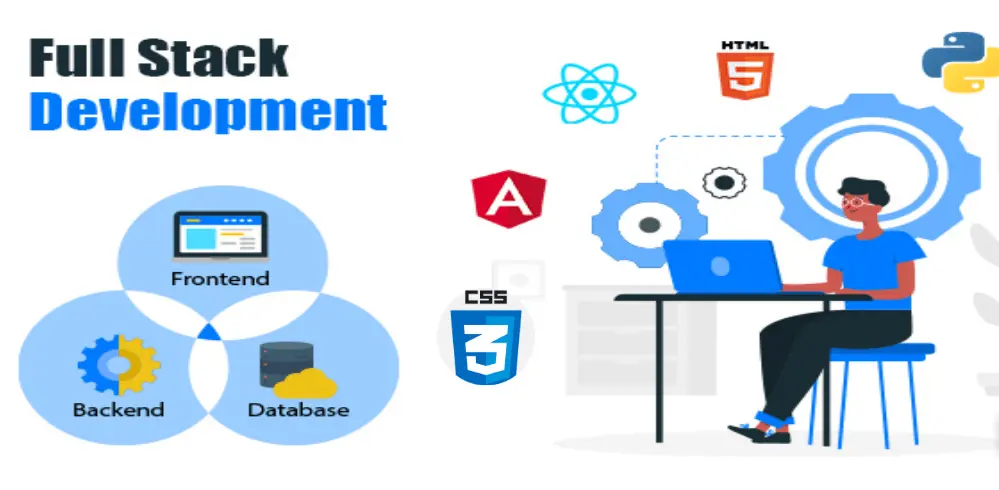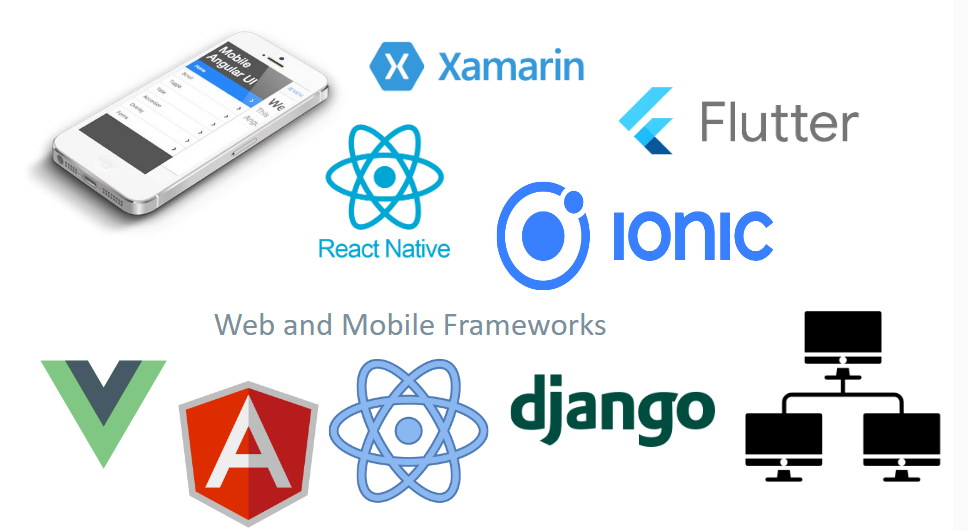What is Application Development?

Application development refers to the process of building a software application that includes all layers of technology needed to create a complete, functional product. This includes both the front-end and back-end components of the application, as well as any necessary middleware and database systems.
Front-end development involves creating the user interface (UI) and user experience (UX) elements of the application that the end user interacts with. This includes designing and building the layout, visual elements, and interactivity of the application using languages like HTML, CSS, and JavaScript.
Back-end development involves creating the server-side logic and functionality that powers the application. This includes writing code in languages like Java, Python, or Ruby, and creating database systems to store and retrieve data.
Full stack developers are skilled in all of these areas, and can build an application from start to finish, including design, development, testing, and deployment. They often work in teams with other developers, designers, and project managers to bring a product to market.
Understanding the Application Development
The full stack is the backbone of modern web development, and understanding it is crucial for anyone looking to make a career in tech. From front-end technologies like HTML, CSS, and JavaScript to back-end languages like Ruby, Python, and PHP, mastering the full stack means knowing how to build robust, scalable, and user-friendly web applications.
Whether you're a seasoned developer or just getting started, investing in a comprehensive understanding of the full stack is key to staying ahead of the curve and building the next generation of web applications. So why wait? Dive into the world of full stack development today and unlock your full potential as a tech professional!
The Front-end of Application Development: HTML, CSS, and JavaScript
If you're interested in web development, you've probably heard of the front-end stack: HTML, CSS, and JavaScript. These three core technologies are the building blocks of the modern web, powering everything from simple static websites to complex web applications.
HTML provides the structure and content of a website, CSS adds style and visual flair, and JavaScript brings interactivity and dynamic functionality. As a front-end developer, mastering these three technologies is essential for creating beautiful, responsive, and user-friendly websites that engage and delight users.
So why not start exploring the front-end stack today and unlock your full potential as a web developer?
The Back-end: Server-side Programming Languages and Databases
The back-end stack is the foundation of any web application, providing the logic and functionality that make it work. At its core are server-side programming languages like Ruby, Python, and PHP, which enable developers to create complex algorithms, manage databases, and handle user authentication and security.
In addition, databases like MySQL and MongoDB provide the storage and management of data that powers web applications. As a back-end developer, mastering these technologies is critical for building robust, scalable, and efficient web applications that can handle heavy traffic and complex data structures. So why not delve into the world of back-end development today and unlock your full potential as a tech professional?
Web & Mobile Frameworks
Skills and Tools for Success

Full stack development requires proficiency in a variety of technologies and frameworks, including those for web and mobile development. Web frameworks like React, Angular, and Vue.js provide a foundation for building dynamic, responsive, and scalable web applications. Meanwhile, mobile frameworks like React Native, Xamarin, and Flutter enable developers to create native mobile apps using familiar web technologies.
By mastering these frameworks, full stack developers can build applications that work seamlessly across multiple platforms and devices, delivering a great user experience and driving business success. So why not explore the world of web and mobile frameworks today and take your full stack development skills to the next level?
Testing and Debugging Apps
Developing a full stack application is a complex process, involving several layers of technology and multiple components that need to work together seamlessly. The testing and debugging phase of the development process is crucial to ensure that the application performs as expected and provides the desired user experience. In this article, we will discuss the importance of testing and debugging full stack applications and provide you with some tips to help you optimize your development process.
Why is Testing and Debugging Important for Apps?
Testing and debugging are essential to ensure the reliability, functionality, and security of your full stack application. Without proper testing and debugging, your application is likely to have bugs and errors that can cause it to crash or malfunction. This can lead to a poor user experience, loss of credibility, and ultimately, loss of business.
Testing and debugging also help you identify performance issues that may arise due to the complex nature of full stack applications. These applications typically involve multiple layers of technology, such as front-end, back-end, and database layers, which can create a complex web of dependencies. Testing and debugging can help you identify and resolve these dependencies and optimize your application's performance.
Tips for Testing and Debugging Apps
- Use Automated Testing Tools: Automated testing tools can help you identify and fix bugs and errors quickly and efficiently. These tools can run tests on your application automatically and provide you with detailed reports on the test results. This can help you identify and fix bugs before they impact your users.
- Use Debugging Tools: Debugging tools can help you identify and fix errors in your code. These tools can provide you with detailed information about the error, including the location of the error, the stack trace, and the values of variables at the time of the error. This can help you quickly identify and fix the issue, reducing the time it takes to resolve the issue.
- Test for Security Vulnerabilities: Full stack applications are vulnerable to security threats, such as SQL injection, cross-site scripting, and cross-site request forgery. Testing for security vulnerabilities can help you identify and fix these vulnerabilities before they are exploited by attackers.
- Perform Load Testing: Full stack applications are often required to handle large volumes of traffic. Load testing can help you identify the application's performance under heavy load and optimize it for better performance.
Deployment and Maintenance.
Deployment and maintenance of full stack applications are critical aspects of software development that require specialized knowledge and expertise. These applications typically involve multiple layers of technology, including front-end and back-end development, databases, and servers. The deployment process involves making the application available for use by end-users, while maintenance ensures that the application remains functional and up-to-date with the latest security patches and feature updates.
Effective deployment and maintenance require attention to detail, a deep understanding of the technologies involved, and the ability to troubleshoot and resolve issues quickly. Whether you are developing a new application or updating an existing one, it is essential to work with experienced professionals who can ensure that your full stack application is deployed and maintained to the highest standards of quality and reliability.
Conclusion
Application Development is a complex process that involves multiple layers of technology and requires a high level of expertise. However, by following the best practices and using the right tools, developers can create high-performing, reliable, and secure applications that provide a seamless user experience.
Testing and debugging are essential to ensure the quality of the application, and developers should prioritize these phases in their development process. With the increasing demand for digital products, Full Stack Application Development is becoming an indispensable skill for developers and businesses to succeed in today's digital world.